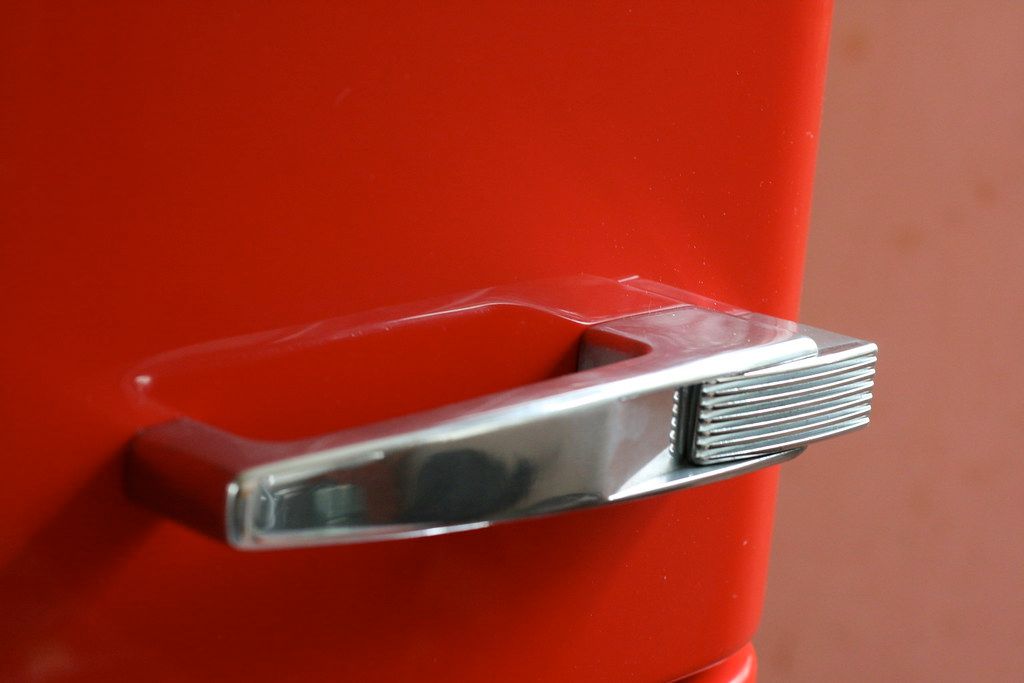By Rowan Fenelon, fourth year Chemistry
The threat of climate change is becoming one of the biggest issues of the century and the need to reduce carbon and greenhouse gas emissions is becoming increasingly apparent.
A large contributor to our emissions and global warming is actually our need to keep things cool; air conditioning and refrigeration require large amounts of energy. It is estimated that between 25 and 30% of the electricity the world consumes is for refrigeration. So, if there was a way of reducing the amount of energy required for refrigeration, this could have a dramatic effect on global emissions.
Traditionally, fridges use a coolant system in which a compound is cycled through the fridge, changing from gas to liquid. The liquid is used to absorb the excess heat from the fridge, thus cooling the air inside and converting the coolant liquid to a gas. This gas is then compressed back into a liquid so it can repeat the process; a lot of energy is required to compress the gas back into a liquid and as fridges are kept on constantly, the electricity needed quickly adds up.
Historically, chlorofluorocarbons (CFCs) were used as the gases in refrigeration. However, they released chlorine radicals into the atmosphere, causing ozone depletion in the atmosphere and thus contributed to the ozone hole. Thankfully, CFCs were phased out due to the Montreal Protocol and the ozone layer is replenishing. However, hydrofluorocarbons (HFCs), the molecules that replaced CFCs, also have high global warming potential. This means they absorb a lot of infra-red (IR) radiation in the atmosphere and have a long half-life, so they stay in the atmosphere for a long time. Despite HFCs often being collected from old fridges, their concentrations in the atmosphere have risen since their introduction, thus further contributing to global warming and climate change.

A proposed alternative for refrigeration is the use of solid-state cooling systems. Bing Li and other scientists at the Chinese Academy of Sciences’ Institute of Metal Research in Shenyang are investigating the use of plastic crystals in refrigeration. For a solid system to be used in refrigeration it must exhibit colossal barocaloric effects (CBCEs), in which a pressure change induces a phase transition which results in cooling.
Plastic crystals have large amounts of orientational disorder and there are only weak interactions between the substances. They are characterised by their softness, as they are easily moulded, like wax. Plastic crystals can be distinguished between liquid crystals, used in electronic screens, due to long-range order. The long-range order is a result of the centres of mass remaining constant, with the molecules being free to rotate or move around these centres of mass. This long-range order can be identified by X-ray crystallography.
It is possible to reduce the disorder in the plastic crystal by cooling the system. This causes the molecules to orient in favourable orientations, but reduces the number of configurations available, resulting in an entropy reduction and an enthalpy change. It has been shown that large amounts of heat are absorbed in these solid-solid transitions. Thus, the possibility for their use as a solid-state cooling system is apparent.
For their use in refrigeration, this phase transition must be able to be induced by a pressure change. The researchers found that neopentylglycol (NPG) exhibited CBCEs upon changing from the plastic crystal to the ordered solid phase with a slight pressure change. This phase transition had an entropy change ten times greater than other calorimetric materials available. The CBCEs were attributed to the reduction in orientational disorder, and this was confirmed by molecular dynamics studies.
Overall, these substances are a hopeful prospective alternative to typical refrigeration systems, but more research is needed to investigate increasing their energy efficiency and how implementation of the solid-state cooling system would be done.
Featured Image: Flickr / Dom Crayford
Want to get involved? Get in touch!









